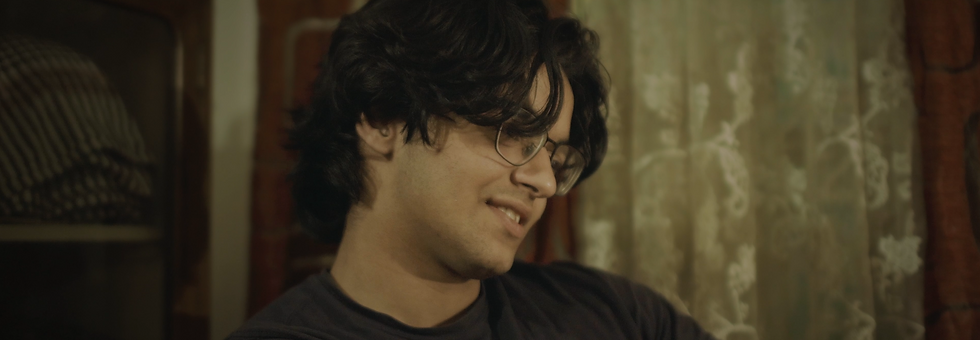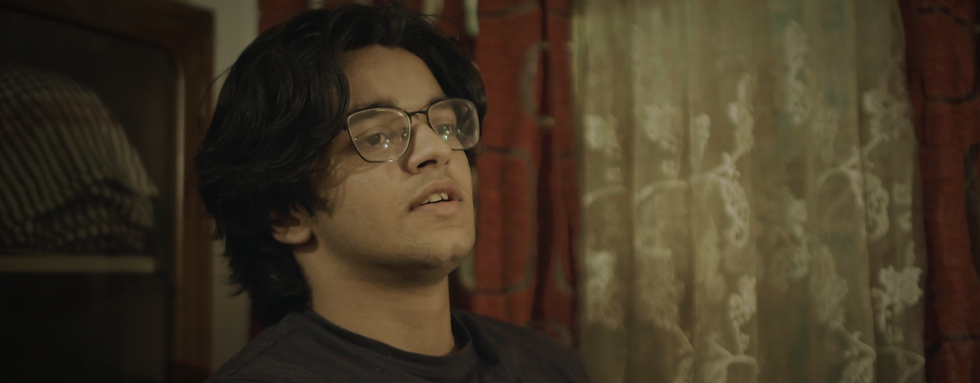Analysis of Footage
- zainfaridr
- Apr 8
- 3 min read
Updated: May 12
Production Process Analysis: The conversation that reveals it all. Context: This is the emotional turning point in the narrative. It's when Saif, who has been closed off and distant, begins to unravel. The dialogue slows, eye contact lingers, and unspoken trauma starts to spill out. This moment reflects my own personal experiences, so it's a deeply subjective, internalized scene that needed both emotional weight and subtlety in direction.

Performance:
This scene works because of how natural the performances feel. It's not melodramatic. There's restraint. The emotions, they feel it. There's a slight hesitation before every line, a broken cadence, like they're carefully picking words from a well of pain. That performance style amplifies the realism. The small, involuntary things like swallowing, shifting in the seat, or slightly furrowing the brow do more than a dramatic monologue ever could. It’s discomfort on camera. Authentic and unpolished.


Cinematography:
I shot this with a cluster of angles, and it paid off. The closer the characters get emotionally, the tighter the framing becomes. You subtly shift from medium shots to over-the-shoulders and close-ups, visually pulling us into the conversation. It’s a technique often used in films like Manchester by the Sea or The Son, where there's minimal movement, letting facial expressions carry the weight. The lighting, soft and diffused, adds a domestic intimacy to the frame. There’s no spotlight, the whole thing feels like the overhead glow of a late night conversation. Nothing staged. Just... familiar.
One especially effective moment might be the quiet handheld shakiness when Saif finally begins to open up. It’s almost imperceptible, but it echoes his emotional instability. That lack of visual polish works in favor of authenticity.
Mise-en-Scène:
The space around them is filled with silence. I didn't clutter the set; the dining table is mundane, lived-in, with subtle signs of presence like a worn chair, some books and notepads. That mundanity makes the emotional weight land harder. It’s trauma surfacing in an ordinary setting. Which is often how it happens in real life.

Also, note the placement of objects, the laptop between them could subtly symbolize a divide that starts to disappear as the conversation progresses. Even how the light falls more on Saif’s face as he speaks creates a kind of subconscious spotlight, highlighting the shift from silence to vulnerability.

Sound Design:
I recorded separate audio for diegetic sounds chairs creaking, the click of the laptop, friction against the chair, even the background ambiance. These small sounds build tension. There's no background score, because silence speaks louder in this case. You let the room breathe, and it heightens the realism.
When Saif opens up, the soundscape thins out. It becomes quieter, more intimate. It’s almost like the room is holding its breath with him, giving the audience time to grasp what he's saying. Which is followed by a faster paced emotional synth pad paired with a piano to add a layer of severity to what he just revealed about his past. That choice reinforces the sense that this is a rare moment, a rupture in his usual emotional facade.
Editing and Pacing:
The edit doesn’t rush. I give my actors space between lines. Those gaps, those few seconds of silence before and after a sentence, are everything. I'm trusting the audience to sit in that discomfort. It’s bold. There are no flashy cuts, no overused reaction shots. Just stillness. Letting it play out. Symbolism and Subtext:
On the surface, it’s a conversation. But below, it’s a confrontation with suppressed guilt, possibly shame, maybe even anger. This is someone finally breaking years of internal silence. The kitchen table becomes a confessional. And the contrast between the domestic setting and the weight of what’s being said forces us to reckon with the idea that trauma isn’t always explosive. Sometimes it looks like two people talking softly, holding back tears over dinner.


The performance, the lighting, and the silence are all tools working toward that truth.
Conclusion:
In my opinion, this sequence is a perfect example of “less is more.” It’s emotionally complex but visually simple. Everything about it, the camera, the lighting, the silence, the acting, everything, everything supports the emotional payoff. And because it’s rooted in my own experience, I directed it with an understanding no one else could bring. It doesn’t scream its emotions. It breathes them. It lets them unfold.













Comments